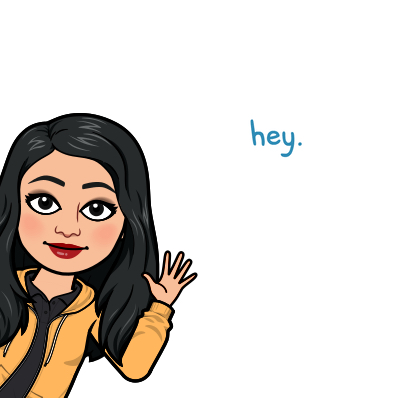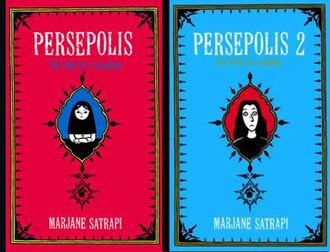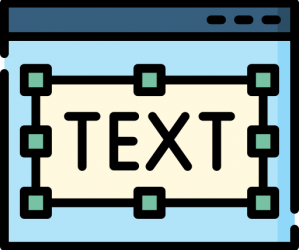Guess the famous sitcom?



Reflections:
I began with the title of my favourite sitcom in mind, because just like prose, the idea in my mind was to progress in a linear fashion as “sequencing has effects on authorship and reading” (Kress, 2005, pg. 13). Just as a prose narrative begins with a title, provides a brief description of various key characters that enables the reader to visualize the different elements, I too followed a similar narrative arc and began with the title, followed by emojis describing the characters’ qualities—both explicit and implicit, which in turn was followed by the unveiling of the plot. While print provides ownership and a sense of control to the author, with readers being mere dependants, visual imagery works differently in the sense that all elements are present, “so it is the viewer’s action that orders the simultaneously present elements in relation to her or his interest” (Kress, 2005, pg. 13). It made me realize that even though I tried to follow a liner narrative in my emoji story, the reader need not follow the same logic or linearity of thoughts for it is as easy to not begin at the beginning and to not end at the end.
 Graphics are used in replacement of text and the two are constantly working upon one another (Bolter, 2001, pg.47) Similarly, emojis are being increasingly used to replace common textual phrases and are also used to express emotions. For example, the heart emoji alone has various meanings ranging from romantic love to friendship to a close bond to admiration, all depending upon the colour of the heart. A “bye” or a “see you later” is replaced by the hand wave emoji.
Graphics are used in replacement of text and the two are constantly working upon one another (Bolter, 2001, pg.47) Similarly, emojis are being increasingly used to replace common textual phrases and are also used to express emotions. For example, the heart emoji alone has various meanings ranging from romantic love to friendship to a close bond to admiration, all depending upon the colour of the heart. A “bye” or a “see you later” is replaced by the hand wave emoji.

In fact, emojis are now being customized according to the user, to create a personal emoji or a Bitmoji—or what I refer to as an emoji with a personality!
While putting together my emoji story, I relied heavily sometimes on the metaphorical aspect of emojis to convey my message. Sometimes, the symbolic emojis can be misinterpreted due to their subjectivity or “as so it is the viewer’s action that orders the simultaneously present elements in relation to her or his interest” (Kress, 2005, pg. 13). Like all art forms, the ideas expressed in my emoji story can be interpreted based on the viewer’s personal experiences, bias and worldview.
For example, the following emojis can mean that the character is nerdy; loves maths/science and perhaps loves candies. What I was aiming for is the fact that the character is very smart in a geeky way (think Sheldon from the Big Bang Theory) but is also very sweet-natured. Because I could not find an emoji for ‘sweet-natured’ I decided to go for the wrapped candy instead!

If I were to be completely honest, I wanted to create an emoji story for the last book that I read “Just Mercy: A Story of Justice and Redemption” by Bryan Stevenson. I decided not to go ahead with it as it would be very difficult for me to express the main theme of racial discrimination, police brutality and bias which is faced by black Americans in an emoji format. I can connect this to this week’s reading that the mode and media is critically important in terms of how we think of acts of production and consumption of meaning. In my opinion, emojis would not do justice to the book with its serious themes. Thus, the medium of communication should be based on what needs to be communicated and what meaning we want the viewers or learners to discern least it be misinterpreted. Instead, I decided to go with something that would be more suitable to an emoji format—a regular sitcom.
When we reflect on the tension between visual and print modes (Bolter, 2001, pg. 54), it is interesting to see how paper-based media is created using digital tools. In my professional experience as an instructional designer, I have been involved in using tools such as Adobe InDesign to create books in a digital format. This includes our instructor and student manuals, brochures, etc. with hyperlinked table of contents and a standard template. While the main use of the manuals is digital, these can also be printed if required. My next goal is to create interactive eBooks, complete with multimodal elements that include videos, sound effects, 360-degree images, etc. The eLearning modules that I develop rely largely on visuals. Based on feedback from the learners, I try to minimize the text on screen, and choose templates that are not too text heavy. The modules are often accompanied by voiceovers for those who prefer a more auditory style of learning. This is, as Bolter (2001) says, an evidence of the fact that we are living in a more visual culture.
“The breakout of the visual, the ekphrastic impulse, is at its most vigorous in the electronic writing space, where new media designers and authors are also redefining the balance between word and image” (Bolter, 2001, pg. 57). When it comes to redefining word and image, perhaps one of the best examples that comes to my mind is that of the graphic novel, of which “Maus” and “Persepolis” happen to be my favourites. Graphic novels, in my opinion, are the perfect examples of where writing tells and visuals depict or show (Kress, 2005, pg. 12). Both graphic novels deal with very serious themes such as the Holocaust, exile, fundamentalism and the journey of an immigrant being a few dominant themes, but do an amazing job of striking the right balance between visuals and text, where one truly builds upon the other.

References:
Bolter, J. D. (2001). Writing space: Computers, hypertext, and the remediation of print (2nd ed.). Mahwah, N.J: Lawrence Erlbaum Associates. doi:10.4324/9781410600110
Kress (2005), Gains and losses: New forms of texts, knowledge, and learning. Computers and Composition, Vol. 2(1), 5-22.


This is what I’m watching now, too! What are the chances? 🙂 I am currently on episode 5 of season 6!
That’s great, Olga! I hope you are enjoying the series so far. Since writing the emoji story, I have moved on to the final season 7. I will miss it when it ends for sure?! 🙂
Manize,
Is it Parks & Rec?? Really happy it was moved to Netflix recently (if I am correct).
Yes, it does seem to me that you kept with that traditional narrative sequencing, but one of the things I appreciated about your emoji story was the way it was separated into the “character key” and the “script”; almost like in preparation for a drama. It seems you’ve created a list of characters, each of whom have explicit character traits that you’ve expressed through imaging. I thought this was creative and well done – The plot or script portion is where it falls apart a bit for me, but this is to be expected considering this is an entire series as opposed to a novel, book, or movie that follows a solid arc. I too touched on the negotiated meanings images of this nature have in relation to the ‘reader’ or ‘viewer’ and I think you summed this up well in your example of the ‘sweet-natured’ individual.
Hi Carlo,
You got that right! I am on Season 6 of Parks & Recreation currently. I watched it on Prime, but you are correct–it is available on Netflix now.
I did struggle a bit with the plot myself as being a series, each episode follows a different narrative arc. I, therefore, decided to go with “key characters” and their strengths instead, because those are pretty much consistent throughout the series, and the script often builds on these strengths.
Thanks for reading my post and for your inputs!
Manize